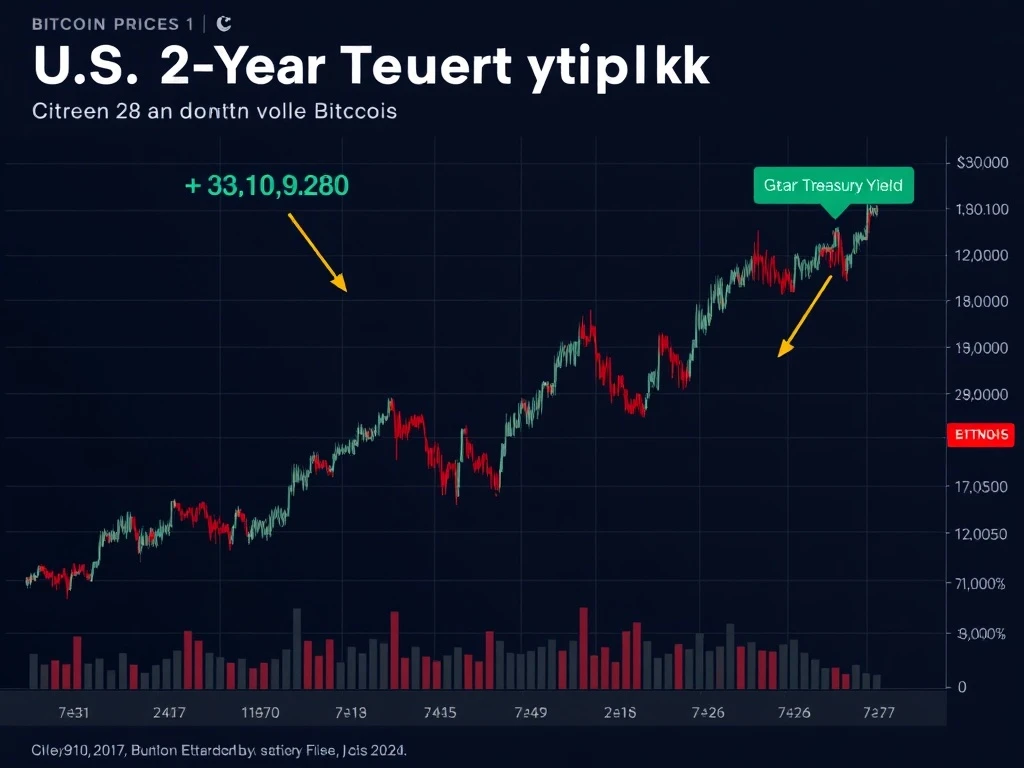U.S. 2-Year Treasury Yield Soars to 3.94% – Is Crypto in Danger?

The U.S. 2-Year Treasury Yield has surged to 3.94%, its highest level since mid-July, sending shockwaves through the crypto market. As investors reassess risk, Bitcoin and altcoins face mounting pressure. Here’s what this means for your portfolio.
Why the U.S. 2-Year Treasury Yield Matters for Crypto
The U.S. 2-Year Treasury Yield is a key indicator of short-term interest rates and investor sentiment. When it rises, it signals:
- Expectations of tighter Federal Reserve policy
- Higher inflation concerns
- Increased appeal of low-risk assets over volatile cryptos
How Rising Yields Impact Bitcoin and Altcoins
Higher Treasury yields create a “risk-off” environment, diverting capital from speculative assets like crypto. Key effects include:
| Factor | Impact on Crypto |
|---|---|
| Stronger U.S. Dollar | Reduces global demand for Bitcoin |
| Higher Borrowing Costs | Slows DeFi and blockchain startup growth |
DeFi vs. Traditional Bonds: The Yield Battle
While Treasury bonds offer guaranteed returns, DeFi platforms compete with:
- Staking rewards
- Lending protocols
- Liquidity mining
However, these come with higher risks, making them less attractive to cautious investors.
Actionable Insights for Crypto Investors
To navigate this volatile landscape:
- Monitor Federal Reserve policy changes
- Diversify across asset classes
- Focus on projects with strong fundamentals
FAQs: U.S. Treasury Yields and Crypto
Q: How does the Federal Reserve affect crypto prices?
A: Fed policies influence Treasury yields, which impact risk appetite and capital flows into/out of crypto.
Q: Will Bitcoin recover if yields drop?
A: Historically, lower yields support risk assets, but other factors like adoption also play a role.
Q: Are DeFi yields safer than Treasury bonds?
A: No, DeFi carries smart contract and market risks, while Treasuries are government-backed.
Q: Should I sell my crypto if yields keep rising?
A: It depends on your risk tolerance, but diversification is often wise in volatile markets.








